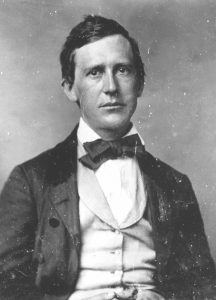Since ancient times, the Eye of Horus, which is also referred to as the “all seeing eye,” is one of the most recognized symbols of ancient Egypt. The Egyptian symbol for the goddess Wedjat was used for protection, for healing, as well as for mathematical and medicinal calculations. The word Wedjat means sound, and it is the name of a cobra goddess often depicted as a rearing cobra. The all seeing eye continued in Egyptian civilization and was in use for thousands of years and still continues to be used today.1
According to Egyptian mythology, the god Horus lost his left eye in one of his struggles with the god Set, the brother of Osiris, for the right to rule Egypt, and to avenge the death of his father Osiris. The eye was later restored by the god Hathor, and his restoration came to symbolize the process of making whole and healing. Some other versions of the story indicate that the god Thoth restored the eye and not Hathor. The story states that the restored eye became a symbol of light, and represented protection, strength, and perfection. Although another version of the myth states that it was in fact the right eye and not his left, and that it represented the sun that was torn out again by Set during one of their battles.1

Thoth then restored all of the eye except a small piece that became the origin of the Horus-eye fractions. The right side of the eye equaled 1/2, the pupil 1/4, the eyebrow 1/8, the left side of the eye 1/16, the curved tail 1/32, and the teardrop 1/64. Once these fractions were added, they total 63/64, known in mathematical circles as the reciprocal 2N series and a complementary fraction. The Horus eye fractions were used for measuring grains and medicines.3
The right eye is said to be symbolic of the sun, the day, and its power. The left eye represents the waxing and waning properties of the moon–the Horus or light of the night. The two-winged eyes represent the two divisions of heaven: north and south, and sun and moon. The image uraeus was a symbol of kingship and power and said to be worn on top of the forehead. The Wedjat was also depicted as a leonine form known as the Eye of Ra. The Eye of Horus survived beyond ancient Egypt in various cultural, mystic, esoteric, and, more recently, neo-Egyptian traditions. The masonic symbol of the eye of Providence, which appears on U.S. currency, is said to derive from the Eye of Horus, as does the Rx symbol used by the pharmaceutical industry. Although some people believe the evil eye is part of the Wedjat tradition, it’s not, even though some sources may link the two. Therefore, the Wedjat is still popular as both a symbol and an amulet, either for protection or for its association with ancient Egyptian culture.4
- Encyclopedia of African Region, 2009, s.v. “Eye of Horus, ” by Denise Martin. ↵
- Encyclopedia of African Region, 2009, s.v. “Eye of Horus, ” by Denise Martin. ↵
- Edward Hincks, “On the Age of the Eighteenth Dynasty of Manetho,” The Transaction of the Royal Irish Academy Vol.21 (1864): 3-10. ↵
- Edward Hincks, “On the Age of the Eighteenth Dynasty of Manetho,” The Transaction of the Royal Irish Academy Vol.21 (1864): 3-10. ↵



58 comments
Bailey Rider
This was such an interesting article. It’s very interesting that the eye was used for protection, healing, mathematics, and medcicinal calculations. That’s a lot of stuff! It’s also interesting the fact that the eye has fractions and was used for measuring things. Where’s the small missing part? Egyptian history is so interesting and this was a really cool topic! Great job!
Mario Sosa
The eye of Horus is a most peculiar subject. It makes me wonder why this ancient Egyptian symbol is still being used today. This “all seeing eye” has gone through several changes and is often associated with freemasonry. It has also supposedly been an influence on the Eye of Providence on the U.S. dollar bill. Anyways, nicely done article, keep up the good work!
Alyssa Vela
This was a really interesting article! I had no prior knowledge when it came to the Eye of Horus, so I started reading this article without any expectations/not knowing what to expect. I liked that there are so many different uses for it, or more so that you were able to cover so many different uses for it. Overall very well written article! I look forward to reading more of your work in the near future!
Mariana Govea
Great informative article! I did not know all the connotations behind the “All seeing eye”! I have always really been into superstitious stuff like that and I have always heard different sides of what the eye meant! But it is fascinating to know about how the Egyptians perceived this eye! You did a great job describing what each part of the eye meant which if it wasn’t for you I would have never known that each thing meant something different! Super interesting! Good job!
Priscilla Reyes
Looking back, I remember having bracelets with a small stone, that was the “all seeing eye.” I knew some of the meaning behind it, but never that it originated in Egypt. The story behind the eye is a powerful and complex one. However, I believe it’s the people of the time and of later generations who gave it importance and the power it is seen to have now. Still, I liked that you added the system parts of the eye and the fractional equivalents because it is something unique few people know about.
Nicolas McKay
This was a wonderful article Elizabeth. I was familiar with the image of the Eye of Horus, but I had no idea it had so much story and significance. Its so interesting how there are different interpretations for the story and significance behind it. At first glance the stories sound so similar yet the meaning behind them are so different. The fraction of the eye was also very interesting, and certainly something i never could have imagined was a thing. wonderful job once again.
Alyssa Valdez
Very interesting how much meaning the “All seeing eye can” have. I have head of this before I didn’t know much about the background and I had not idea that it was used for such a variety of reasons from protection to mathematical calculations? How interesting! I thought this article was very informative! I also thought it was interesting how each part of the eye represented a fraction!
Zander Barrera
taking something (object or idea) from a time before and either making it in your own image or slightly altering its purpose to fit modern times is in short what the Egyptians have been doing with the eye. And you did an excellent job highlighting this in your article; in a way the gods of Egypt where like the many ways like the storys and dramas of the Greek gods. All for one symbol which possessed many identities; very well constructed article keep it up.